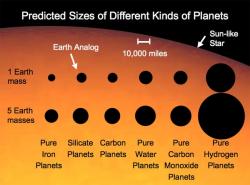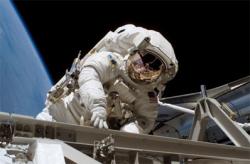by Phil Plait
I can hardly believe this: NASA has restarted and re-funded NuSTAR.
That’s the Nuclear Spectroscopic Telescope ARray, a small X-ray observatory. Back in my old job in California I was on the Education and Public Outreach (E/PO) team for NuSTAR, so I am very, very pleased it got the go-ahead — considering, after all, that it was canceled over a year ago! Obviously, there’s a story here.

What follows is my opinion based on events as I remember them. The Sonoma State E/PO group, NuSTAR team, and everyone else have nothing at all to do with my opinion… except that my opinion is right.  Let me also add that while I am saying things about one specific person at NASA below, I do not hold all of NASA accountable for her actions. Nor should you.
Let me also add that while I am saying things about one specific person at NASA below, I do not hold all of NASA accountable for her actions. Nor should you.
In 2003, NASA put out a call for proposals for SMEXs, Small Explorer missions (meaning the cost had to be kept under $120 million, minus launch). My group was tapped to do E/PO for five proposals, out of 36 submitted. NASA then went through the proposals, culled them, and picked five for further study. We were on two of those five. One was NuSTAR.
We worked very, very hard on those proposals, and I can only imagine what it was like for the folks actually creating the scientific and engineering justification for the missions. I wrote like a madman, trying to shine up and gloss the ideas batted around by our team (I suppose you could say I was the main writer, but everyone contributed substantially to the writing, and the ideas and such were a team effort). We worked it and reworked it, honing down the essays to fit in the frustratingly small space requirements for submission. But we were excited.
For one thing, the head guy for NuSTAR was (is!) Caltech astrophysicist Fiona Harrison, and if NuSTAR got picked she would become the first ever female Principle Investigator for a NASA mission. There were more women than men in our E/PO group, and I’m a bit of a feminist myself, so we were very sensitive to the idea of encouraging girls and women to learn about math and science. Plus, the mission is pretty cool: it would look for black holes across the Universe, which is always fun. As an added bonus, the spacecraft itself is cool, with a long, extending mast that will accordian out to a length of 10 meters after launch. All of this opens up lots of possibilities for educational efforts.
We submitted the proposal, and waited. Finally, NASA culled again, from five proposals to two. IBEX was one (and we were happy; a good friend of ours was running the education effort for it), and it was given the go-ahead to start cutting metal, as they say. NuSTAR was the other, but it wasn’t quite ready to go all the way, according to NASA. There were some issues that needed to be fixed, so they gave us more time to streamline the proposal.
Well, that’s better than being told "no", right? So we worked on fixing things up.
Then the bomb dropped. We were literally days away from submitting the re-worked proposal to NASA when we were told the project was canceled. That was bad enough… but then I found out that Fiona wasn’t called and told the mission she had spent years putting together was axed. She wasn’t even sent a letter. She found out when NASA had a press conference. Mary Cleave, then the Associate Administrator at NASA for the Science Mission Directorate, was chairing it. A question was asked about NuSTAR, and that’s when Cleave announced the mission was canceled.
This was an unimaginably shameful thing to do.
You can guess how we all felt. I cannot imagine how Dr. Harrison felt. Mary Cleave: not my favorite person in the world. I haven’t been shy about saying that, either (my favorite thing she did, in a dark humor way, was when she canceled the Dawn mission after testifying to Congress about science at NASA… but we get the last laugh; Dawn was also reinstated and is due for launch this week).
Well, after learning in such an awful manner that NuSTAR was canceled, we went on our way, and started in on the usual scrambling for more funding. We got some, we lost others; the usual story. I eventually left the group to pursue my writing career (which I suppose I am postponing writing such a long entry here!), and there you have it.
And then, out of the blue, NuSTAR is back! W00t!
I should have guessed. Mary Cleave left NASA (and there was much rejoicing), and Alan Stern took over. Alan is a scientist and I knew he would do what he could to make sure good missions got what they needed to proceed.
Looking at Alan’s record so far, I am very pleased. I wouldn’t take his job for a million bucks (really), but he is doing pretty well with balancing missions science with NASA’s tight budget (you can peruse the NASA category of my blog for more on how I feel about all that).
And now, NuSTAR is back! Even though I’m no longer on the team, it’s nice to see it. I worked hard on the E/PO proposal — I even wrote quite a bit for the website(s), which will no doubt have to be updated now — so of course I’m glad to see it going ahead. But I’m also really thrilled for Fiona, who deserves this… and maybe I’m happiest for NASA itself, because this shows that even when it makes bad decisions, wiser heads can figure out how to fix things.
















